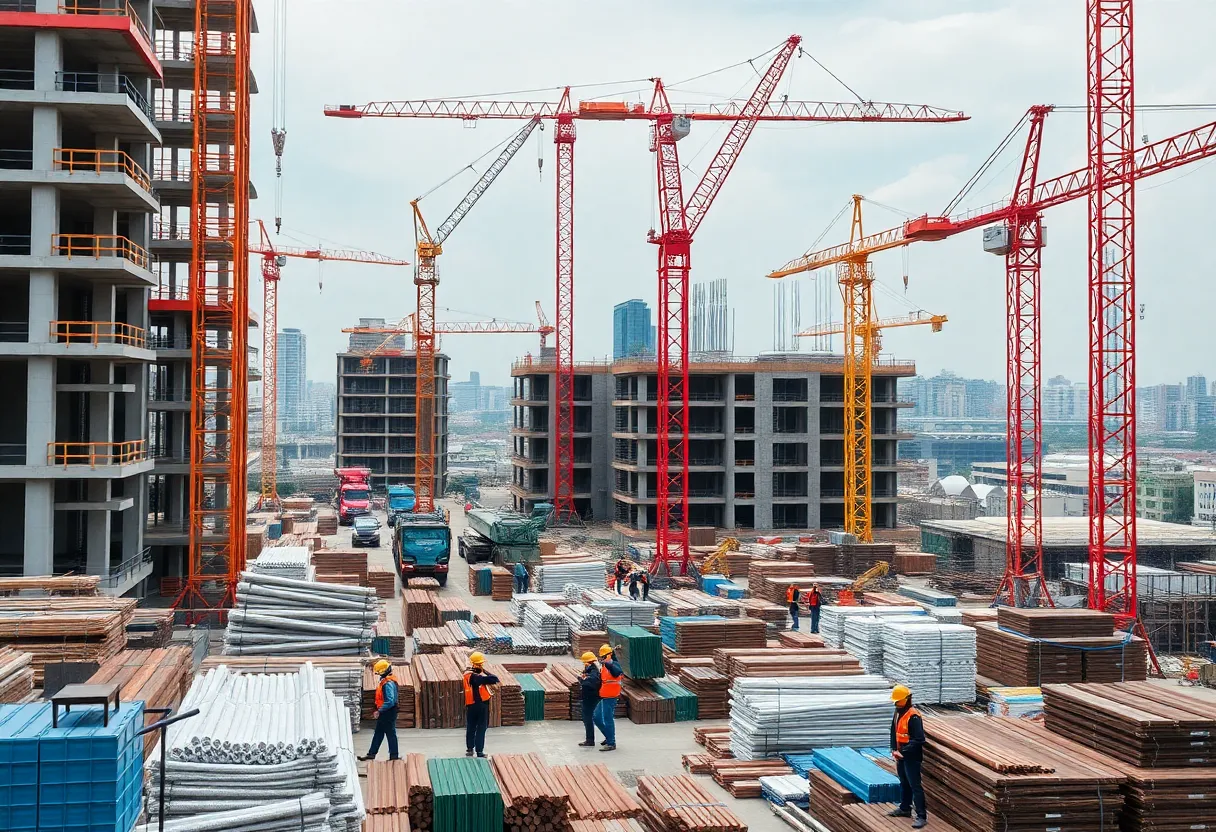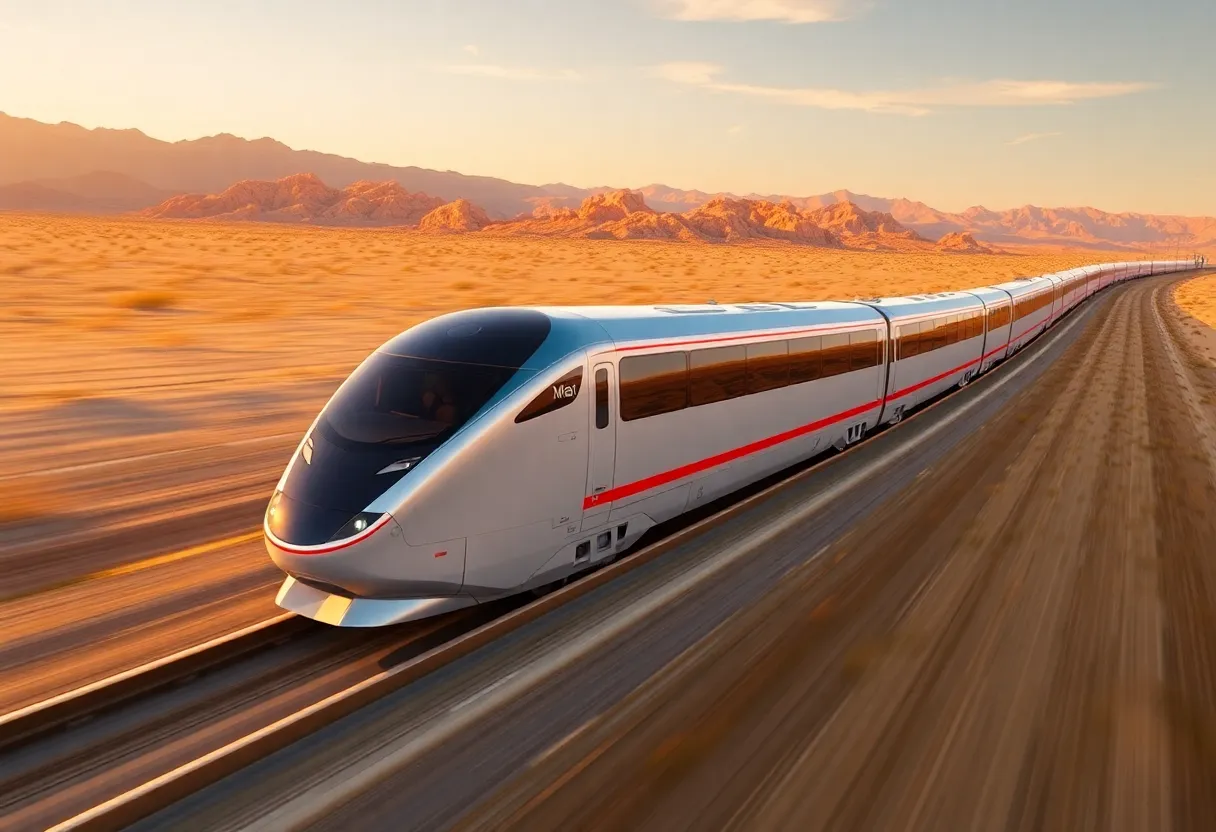News Summary
The construction industry is set to see a substantial investment surge, reaching $16.3 trillion by 2025. However, it struggles with productivity challenges, skill shortages, and supply chain disruptions. As various regions increase investment in infrastructure, labor shortages are projected to result in 250,000 unfilled job openings in the U.S. By addressing these challenges through strategic procurement and technological adoption, the industry can better position itself to executing upcoming projects successfully.
Global Construction Industry Faces Major Challenges Amid $16.3 Trillion Investment Surge by 2025
Urgent Needs Amplify Industry Challenges
The construction industry, which accounts for approximately 13% of the world’s gross domestic product (GDP), is currently grappling with significant challenges, including low productivity growth and performance. As investments in construction are expected to soar to an impressive $16.3 trillion by 2025, there is a pressing need for skilled labor, stable supply chains, simplified regulations, and predictable commodity pricing. The industry’s ability to harness this investment while overcoming its existing hurdles will be critical for future growth.
Investment Surge: A Silver Lining?
The construction sector is experiencing a remarkable surge in investment driven by factors including the renewal of aging infrastructure, energy transitions, and the rising demand for data centers and advanced technology manufacturing. Global capital expenditure in construction is projected to grow at a compound annual growth rate (CAGR) of 6%, with spending in North America estimated to reach $3 trillion by 2025. This surge represents potential gains of $150 billion to $450 billion for various stakeholders within the industry.
Regional Investments Highlight Global Trends
Several regions are spearheading ambitious construction initiatives, including the European Union’s Chips Act, which intends to invest over $50 billion into semiconductor infrastructure. India is committing 3.3% of its GDP toward infrastructure investments, while Saudi Arabia has unveiled plans for $1.25 trillion in capital projects, aiming to enhance its position as a leading construction market.
Additionally, geopolitical factors are prompting companies to reconsider their advanced manufacturing and data center strategies, leading to an uptick in reshoring and nearshoring initiatives. In the United States, the Bipartisan Infrastructure Law earmarks $1.2 trillion for national infrastructure improvements, complementing legislation like the CHIPS and Science Act, which allocates over $50 billion to bolster domestic semiconductor production.
Labor Shortage Fuels Costs and Delays
Despite these investments, the U.S. construction industry faces significant hurdles, including rising labor costs driven by persistent labor shortages. As of late 2024, approximately 250,000 job openings are expected to remain unfilled, further contributing to the industry’s struggles. Notably, labor productivity in construction has grown only 1% from 2000 to 2022, a stark contrast to the 3% increase in manufacturing and 2% across the entire economy.
This ongoing labor shortage impacts both direct craft labor and supervisory roles, causing increased labor costs and heightened recruitment expenses. Recent wage growth of 16% for construction workers adds to the financial pressure on projects, while supply chain disruptions have led to longer lead times for vital materials and equipment, significantly affecting timelines and budgets.
Dynamic Adjustments Required
As material prices have fluctuated drastically, with increases of over 30% for crucial items like steel and copper, project teams are compelled to dynamically adjust schedules and supplier sources. In response to these challenges, companies are adopting strategic procurement techniques. This includes securing materials in advance and forming partnerships with major contractors to ensure consistent supply and mitigate risk.
Embracing Technology for Future Growth
To navigate the complexities of this evolving landscape, the construction sector is encouraged to embrace digital transformation, new technologies, and collaborative contracting models. Emerging trends such as smart construction and green building practices are gaining traction, driven by regulatory pressures and market demand. The use of drones and automation technologies is on the rise, improving safety measures and operational efficiency on job sites.
Additionally, companies are increasingly focusing on enhancing their data management capabilities to streamline operations and make informed decisions. With continued government investments likely to act as crucial drivers of growth amid market volatility and regulatory changes, the construction industry must adapt in order to thrive in this rapidly evolving environment.
Conclusion
The combination of increased investment and systemic challenges presents both obstacles and opportunities for the global construction industry. As stakeholders navigate this complex landscape, prioritizing skilled labor, resilient supply chains, and innovative technologies will ultimately determine the sector’s capacity to improve productivity and performance over the coming years.
Deeper Dive: News & Info About This Topic
Additional Resources
- Deloitte: Engineering and Construction Industry Outlook
- JLL: Growing Industry Sectors Face Unique Construction Challenges
- Nixon Peabody: California Construction Challenges Amid Rising Demand
- Exploding Topics: Construction Industry Trends
- The Chief Leader: Outlook of City Construction Employment Uncertain
- Wikipedia: Construction
- Encyclopedia Britannica: Construction Industry
- Google Search: Construction Industry Trends
- Google News: Construction Industry
Author: Construction CA News
The CALIFORNIA STAFF WRITER represents the experienced team at constructioncanews.com, your go-to source for actionable local news and information in California and beyond. Specializing in "news you can use," we cover essential topics like product reviews for personal and business needs, local business directories, politics, real estate trends, neighborhood insights, and state news affecting the area—with deep expertise drawn from years of dedicated reporting and strong community input, including local press releases and business updates. We deliver top reporting on high-value events such as the Rose Parade, Coachella, Comic-Con, and the California State Fair. Our coverage extends to key organizations like the California Building Industry Association and Associated General Contractors of California, plus leading businesses in technology and entertainment that power the local economy such as Apple and Alphabet. As part of the broader network, including constructionnynews.com, constructiontxnews.com, and constructionflnews.com, we provide comprehensive, credible insights into the dynamic landscape across multiple states.




